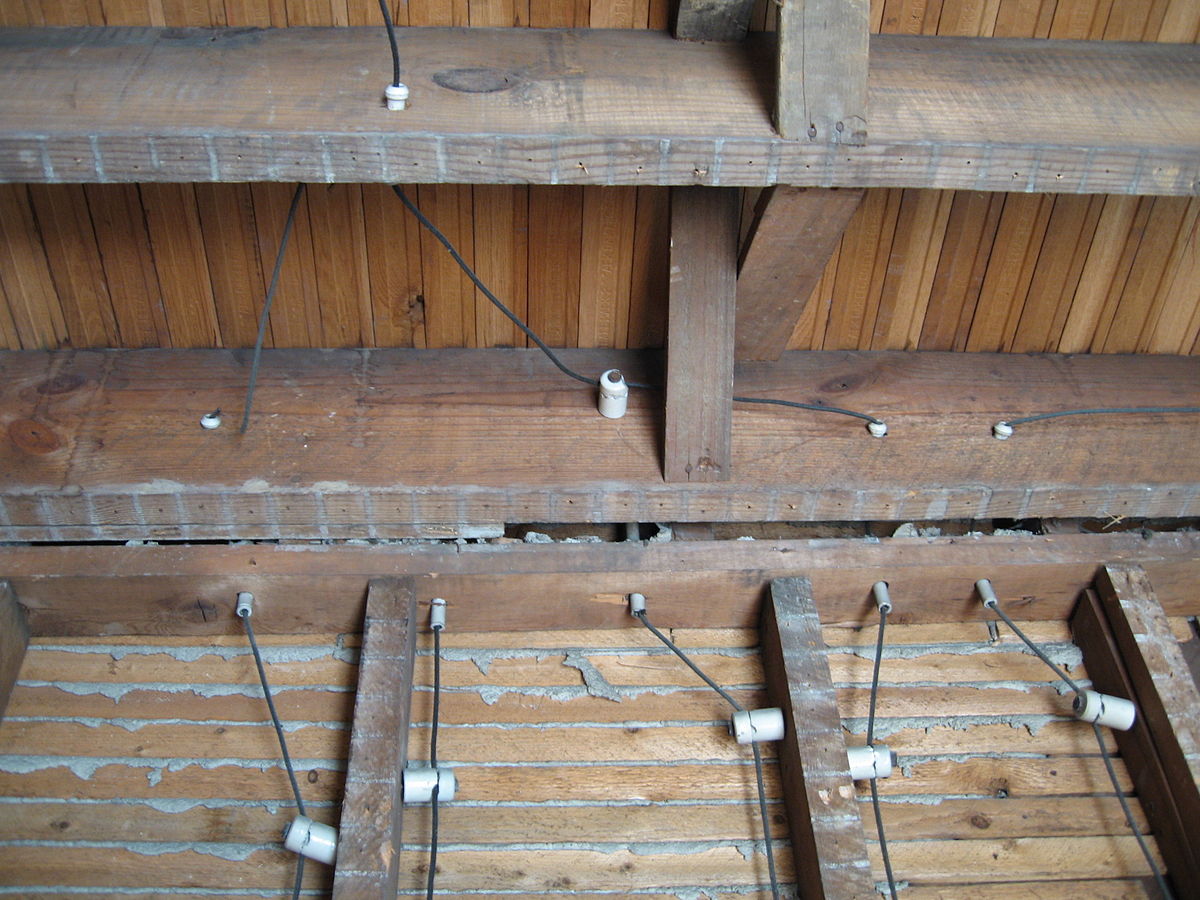I know I am an ignorant Brit but kindly remind me what knob and tube is?
Prior to about 1940, wire was usually often insulated with natural rubber and wrapped with varnished cotton.
Because it wasn't very durable, it was strung in open air and protected/supported with ceramics.
When you find it today, the natural rubber has usually become so brittle that it promptly turns to dust when you touch it, if the varmints and insects haven't chewed through it first. The ceramics keep it safe (almost) even if the insulation disappears entirely and the bare copper is exposed. Problems occur at the terminations (the cut end of the cotton sleeve usually unravels) or when something changes, such as the aforementioned thermal insulation being retrofitted into the attic by a Bigfoot crew, or adding devices for which the amperage capacity doesn't exist.
To further confound things, American practice was to make 10, 15, 20, and 30-amp fuses all in the same interchangeable package. If the fuse kept blowing because you added devices, it was a trivial matter to put a higher-capacity fuse in its place.
(Canadians were a little smarter than this, making the diameter of the button on the base of their screw-in fuses proportional to the amperage rating, and putting non-metallic rejection washers into the fuseholders to make it impossible to put in a higher-capacity fuse)

en.wikipedia.org


